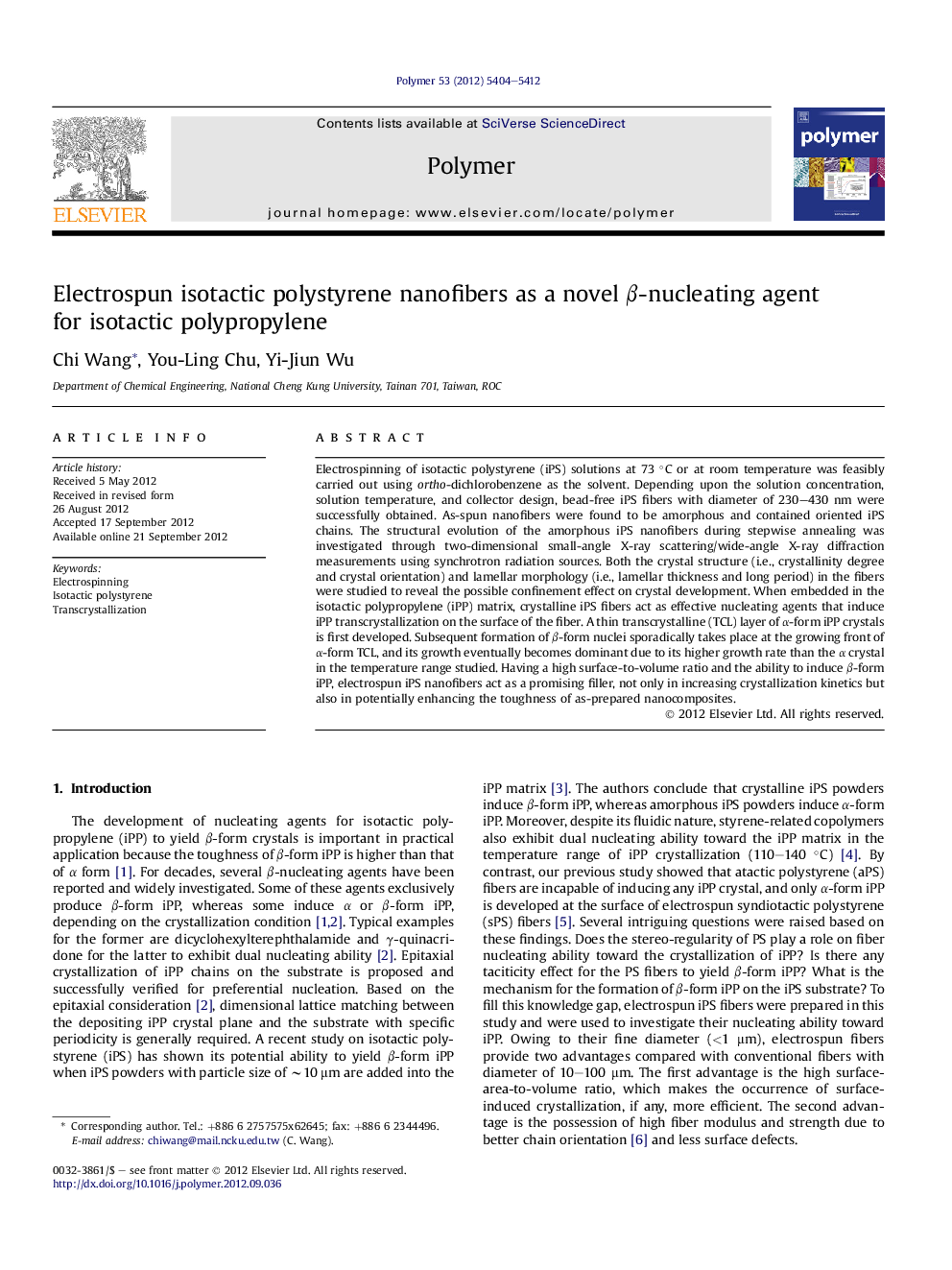| Article ID | Journal | Published Year | Pages | File Type |
|---|---|---|---|---|
| 5183098 | Polymer | 2012 | 9 Pages |
Electrospinning of isotactic polystyrene (iPS) solutions at 73 °C or at room temperature was feasibly carried out using ortho-dichlorobenzene as the solvent. Depending upon the solution concentration, solution temperature, and collector design, bead-free iPS fibers with diameter of 230-430 nm were successfully obtained. As-spun nanofibers were found to be amorphous and contained oriented iPS chains. The structural evolution of the amorphous iPS nanofibers during stepwise annealing was investigated through two-dimensional small-angle X-ray scattering/wide-angle X-ray diffraction measurements using synchrotron radiation sources. Both the crystal structure (i.e., crystallinity degree and crystal orientation) and lamellar morphology (i.e., lamellar thickness and long period) in the fibers were studied to reveal the possible confinement effect on crystal development. When embedded in the isotactic polypropylene (iPP) matrix, crystalline iPS fibers act as effective nucleating agents that induce iPP transcrystallization on the surface of the fiber. A thin transcrystalline (TCL) layer of α-form iPP crystals is first developed. Subsequent formation of β-form nuclei sporadically takes place at the growing front of α-form TCL, and its growth eventually becomes dominant due to its higher growth rate than the α crystal in the temperature range studied. Having a high surface-to-volume ratio and the ability to induce β-form iPP, electrospun iPS nanofibers act as a promising filler, not only in increasing crystallization kinetics but also in potentially enhancing the toughness of as-prepared nanocomposites.
Graphical abstractDownload full-size image
